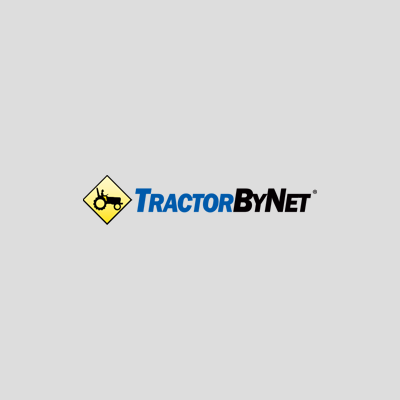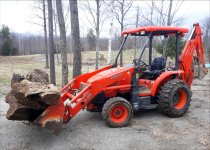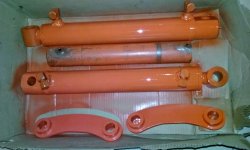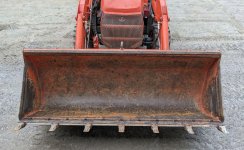Did you ever get the pressure tested? Pretty sure they are indeed 60mm cylinders. Every 100psi is gonna be ~200 pounds at the pins. So if its a few hundred psi low...could be easily robbing you of 400-500# actual lift capacity.
Larger cylinders are just more work than they are worth. Honestly....just setting pressure to spec is all I would do. I have been on several loader tractors....from Deere, kubota, yanmar, mahindra, etc. And kubota's just seem to be the smoothest to operate and feather control of both curl and dump. Id hate to screw that up if you use the loader alot for spreading and grading. Larger lift cylinders may react differently when trying to feather lift and curl for certain tasks.
After doing a pressure test....if you just deadhead a port on the loader valve (quick coupler with a gage and remove one of the hoses) if that dont reveal....its possible to have some worn cylinders. Especially since you said one appears replaced. Maybe try and "tee" the gauge in with the lift circuit. Ang get the loader to stall....like chained to a stump or something you know it wont lift. See what the "active" pressure is with the cylinders in the loop. If a cylinder is bypassing....the pressure will show significantly lower than static deadhead
Not sure what that has to do with anything at all?
L39,
L45,
L47 lift cylinders are 55mm, bucket cylinders are 60mm. I upsized both 5mm.
Unknowingly I was running my pressures @ +3,300 psig before I got around to putting a gage on the system. I kept turning up the relief without checking! Shame on me.
So by upping the cylinders a bit, I am running 3,000 psig to be kind to hydraulic pump, valves an hoses. Also have a cushion accumulator.
With an additional 1,000 plus of ballast, the machine is over 8,000 lbs. Wheel spacers widen rear track 2" for winter chains and add a bit of stability.
Fuel is turned up to provide low 40's hp, to counter the extra weight.
As a old mechanical eng8neer and hot rudder. I think I have learned the hard way finding how enough is enough.
The
L39 overall capability is very balanced and is at its practical limit.
It is very reliable, & amazing for it's size.
Operating other ag. tractors is very disappointing and seems difficult, as they feel so gutless.







